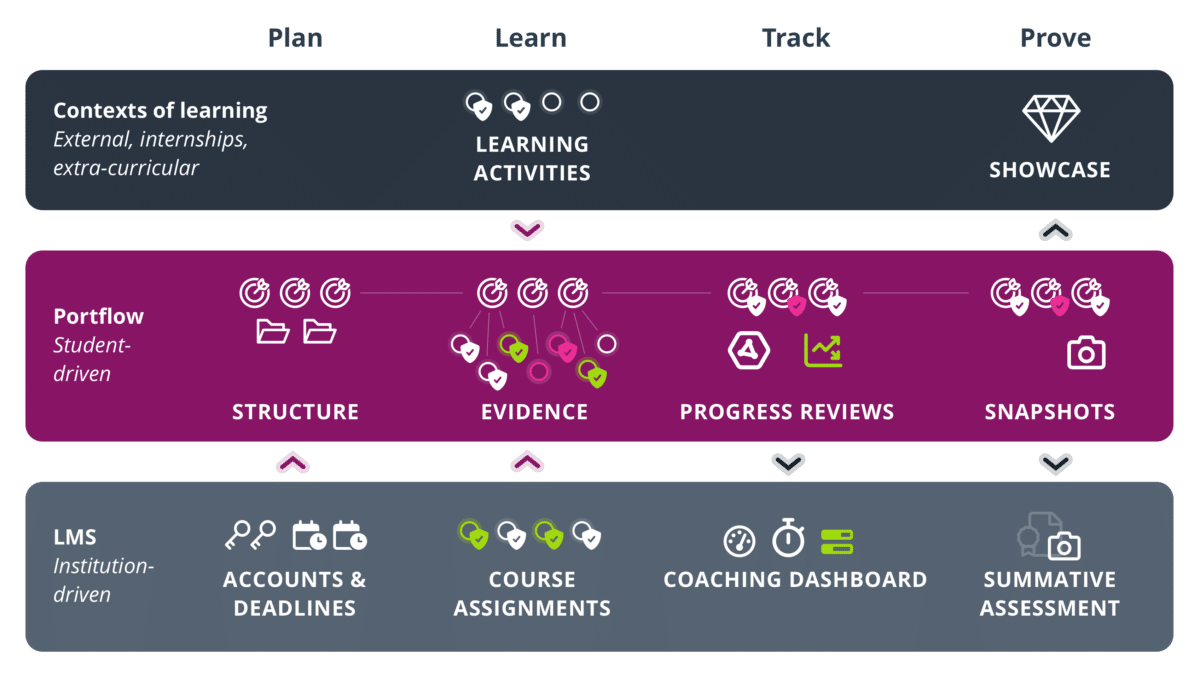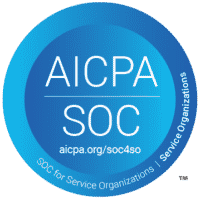Plan
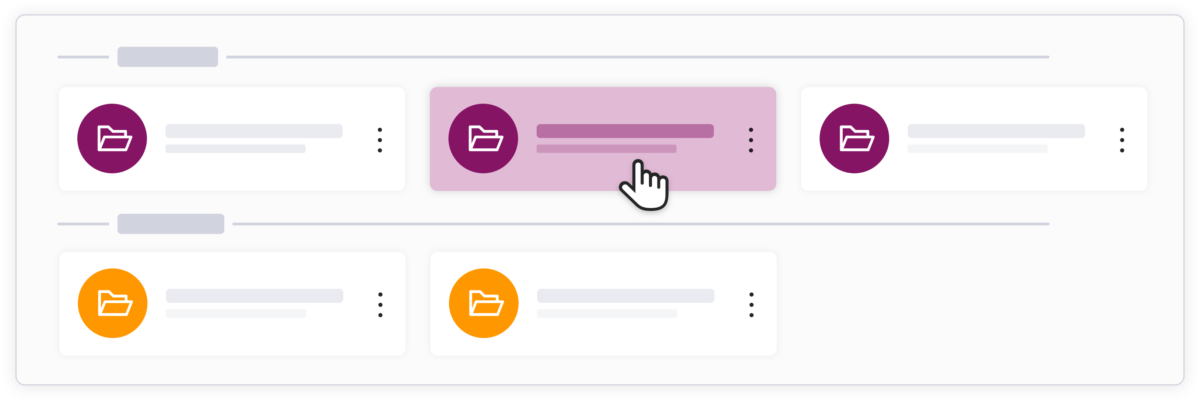
Plan 1/4
Arrange and structure the portfolio through collections (representing learning contexts such as courses, projects, internships etc.) and further organize collections into sections (e.g. periods, phases, or type of skills).
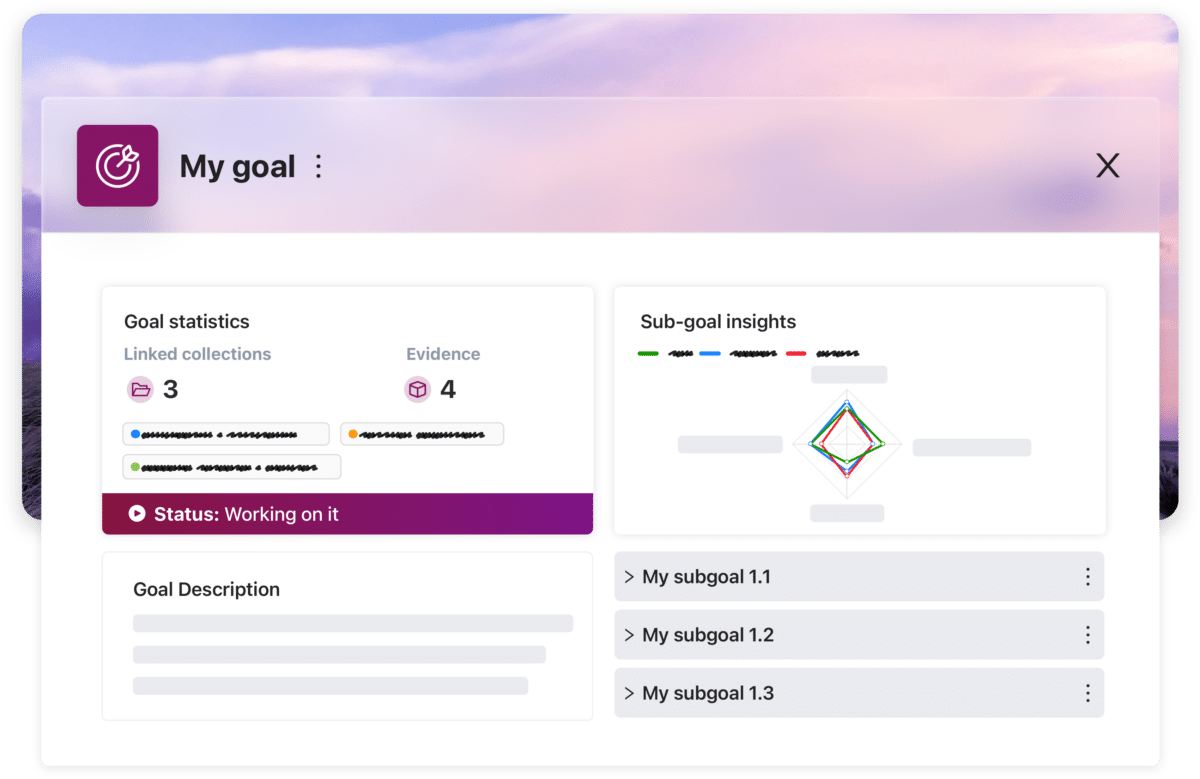
Plan 2/4
Add competencies, skills, learning outcomes, and personal objectives as goals and subgoals allowing you to track your development progress.
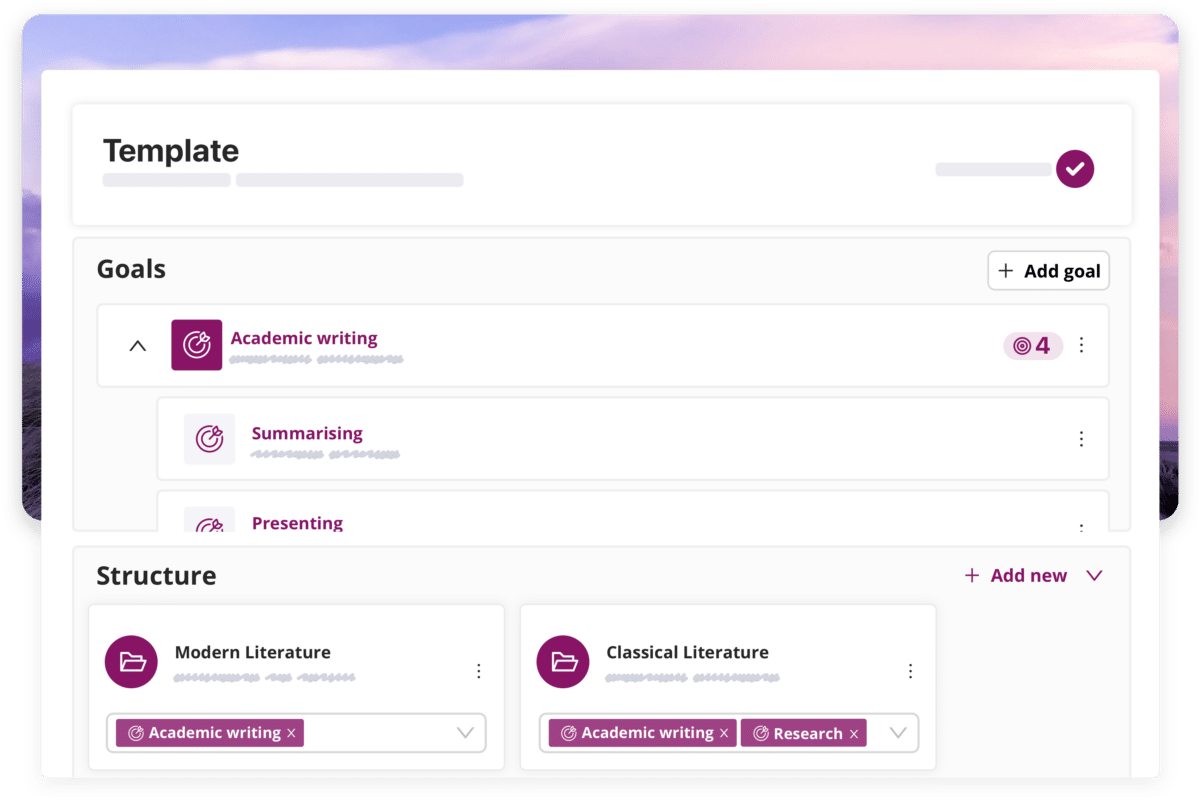
Plan 3/4
Create templates to scaffold the processes of setting goals and structuring the portfolio.
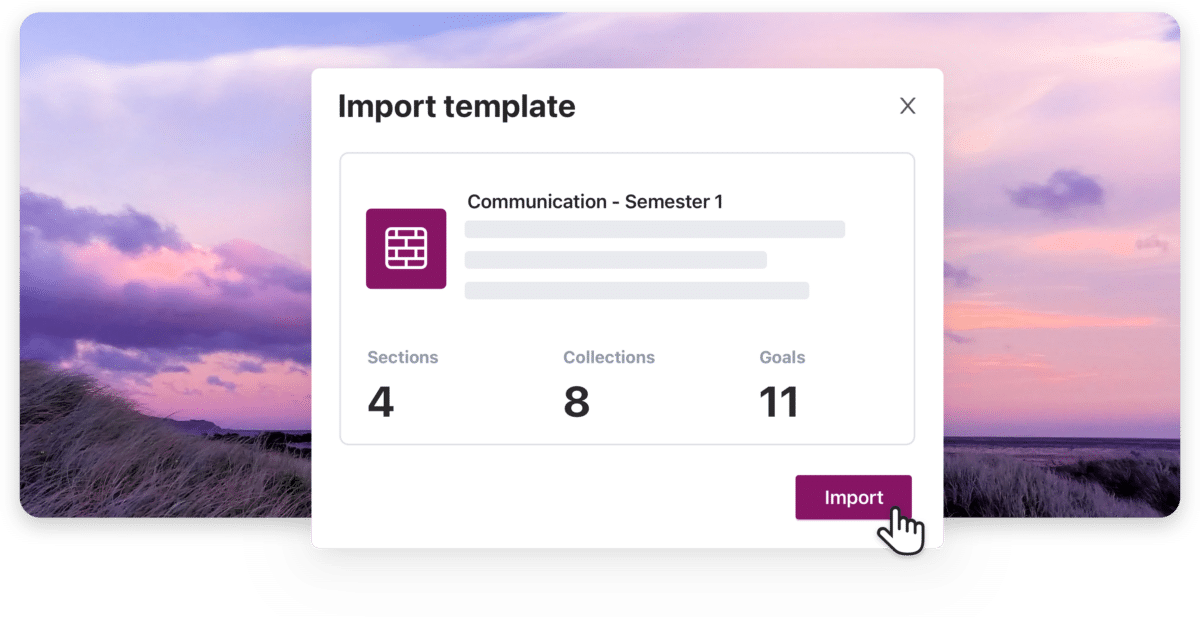
Plan 4/4
Apply templates created by teachers or programme coordinators to help structure the portfolio.
Learn
Learn 1/8
Upload, import, create, or embed evidence of learning experiences from a wide variety of sources and directly preview them in the portfolio, enabling quick feedback.
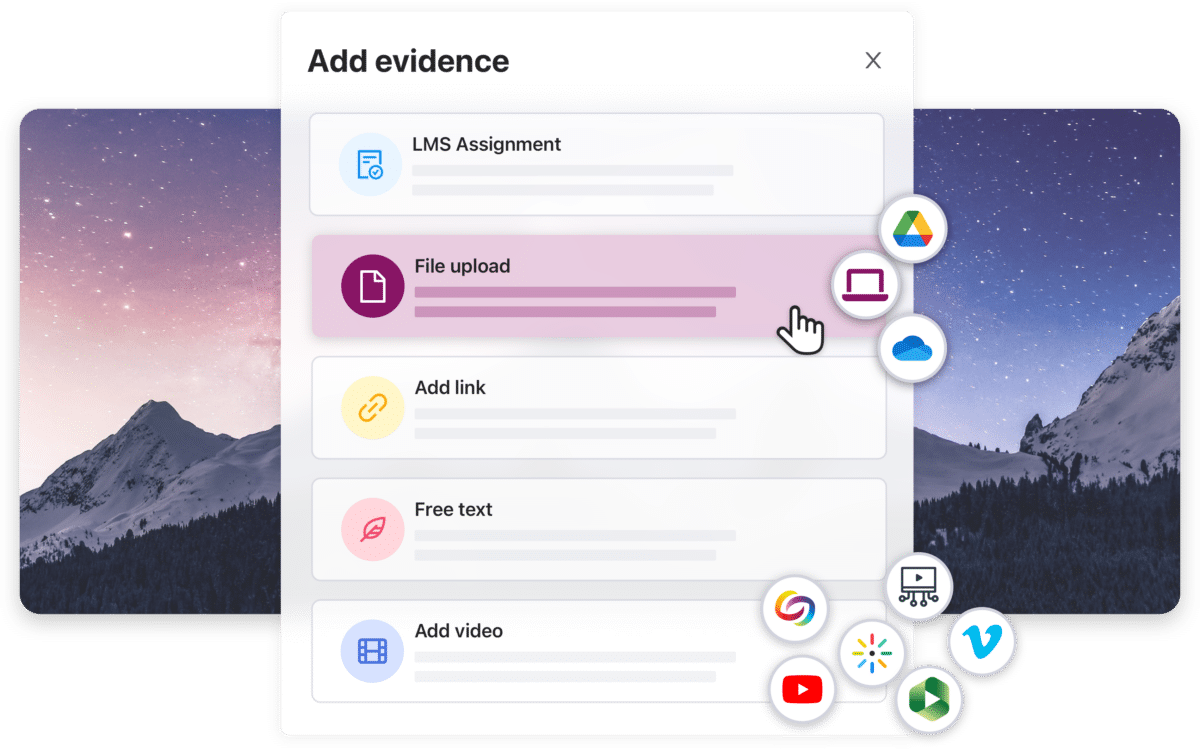
Learn 2/8
Link artefacts and feedback as evidence to goals and sub-goals, tying together all learning experiences from all learning contexts into one place.
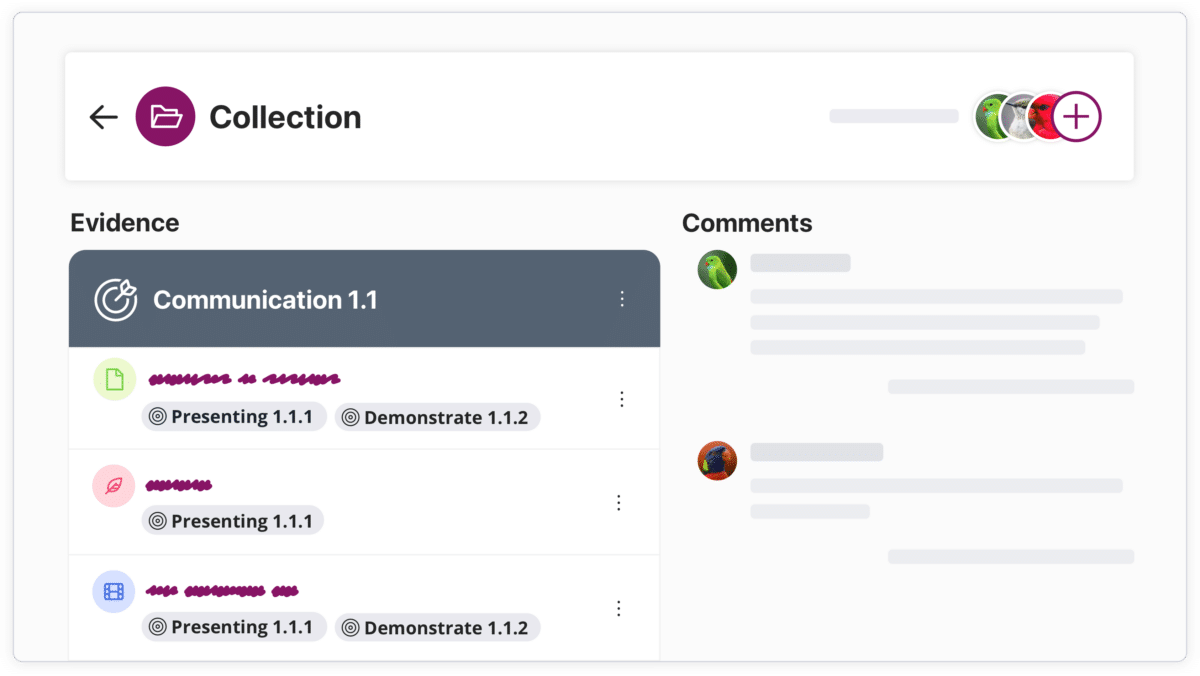
Learn 3/8
Import (graded) LMS assignment submissions from a course and not only the product(s), but also the authentic feedback and their attachments from the teacher is included.
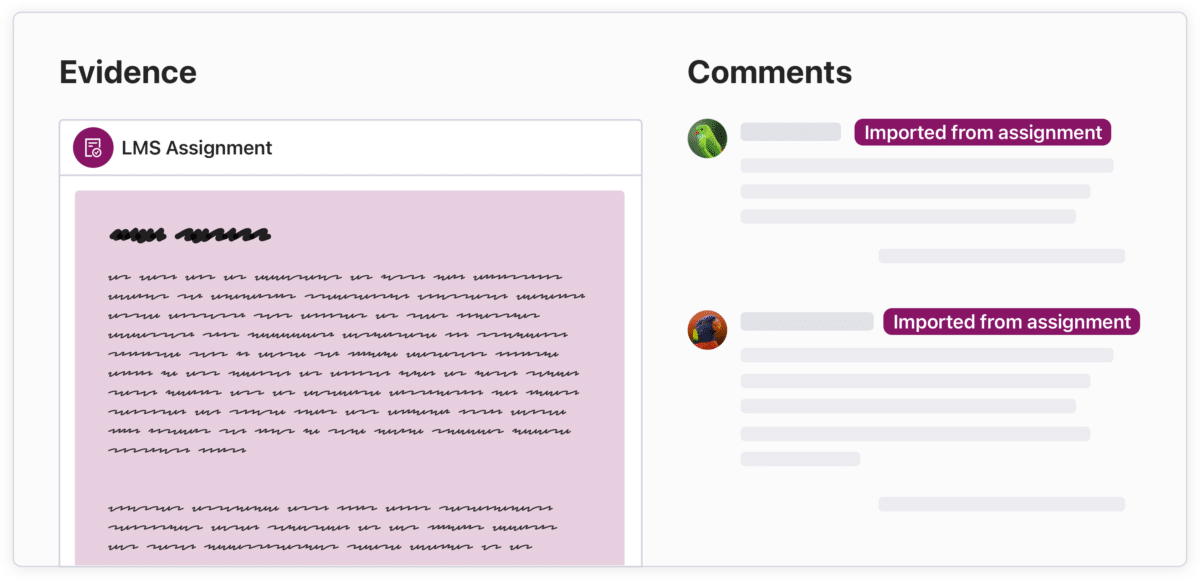
Learn 4/8
The iterative learning and improvement process is fully supported through multiple versions of evidence, whilst keeping sight of all feedback on earlier versions.
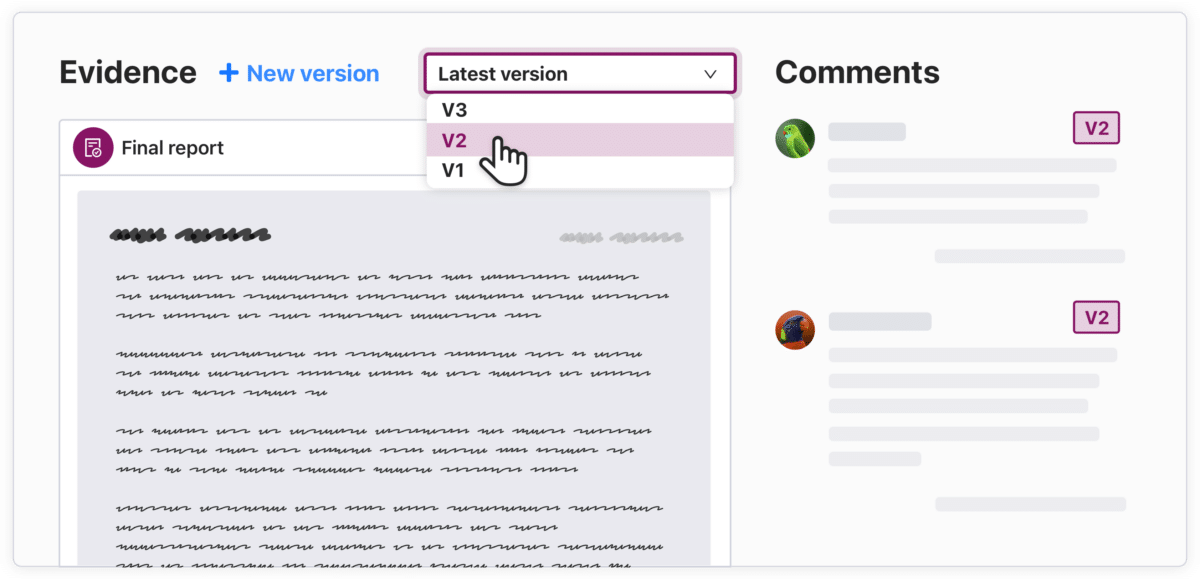
Learn 5/8
A student can determine who has access and for how long, harnessing ownership and ensuring privacy. Choose to share the entire portfolio or a specific collection. Next to easy sharing with other users from within the LMS, external shares enable the inclusion of people outside the institution and their invaluable insights to be involved in the feedback process.

Learn 6/8
Through feedback requests, a student can ask for targeted feedback, e.g. on evidence or collections.
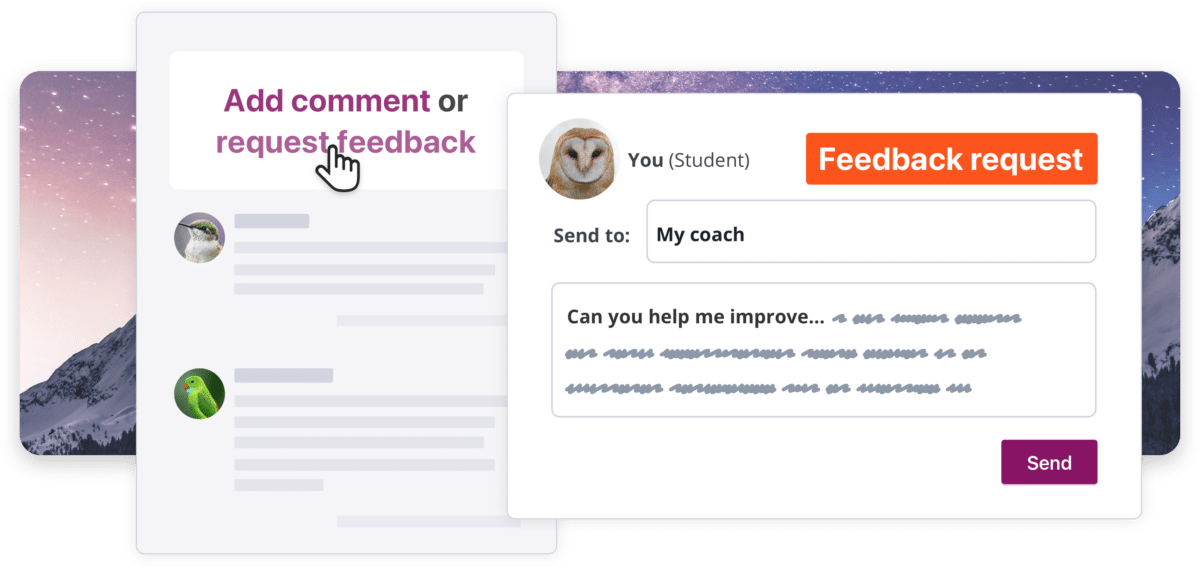
Learn 7/8
Through threaded comments, the feedback can be discussed in order to achieve mutual understanding and a closed feedback loop. Using rich formatting, attachments, and recordings, feedback can be provided structured and enriched to optimize value and clarity.
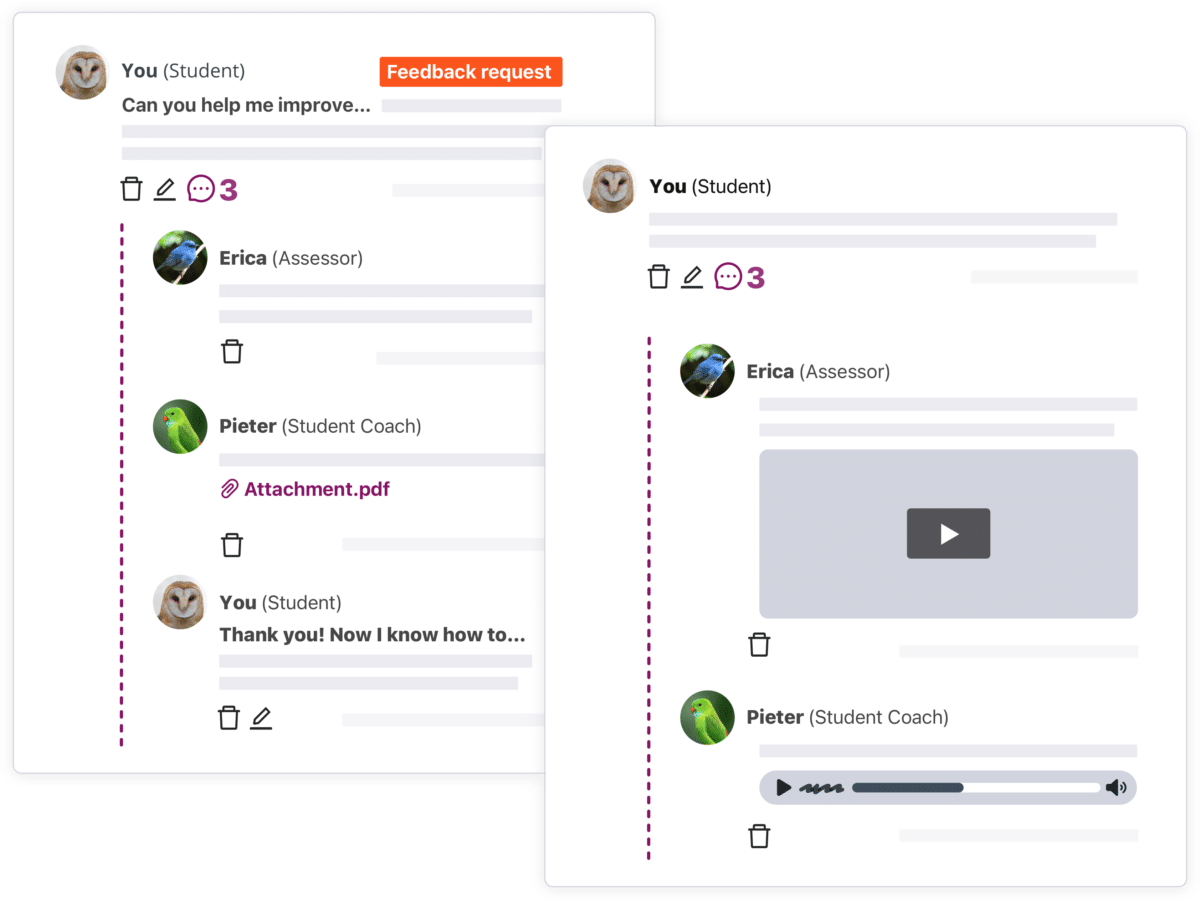
Learn 8/8
Students can highlight and link received feedback to goals, stimulating active processing of feedback and reflection on goal progression.
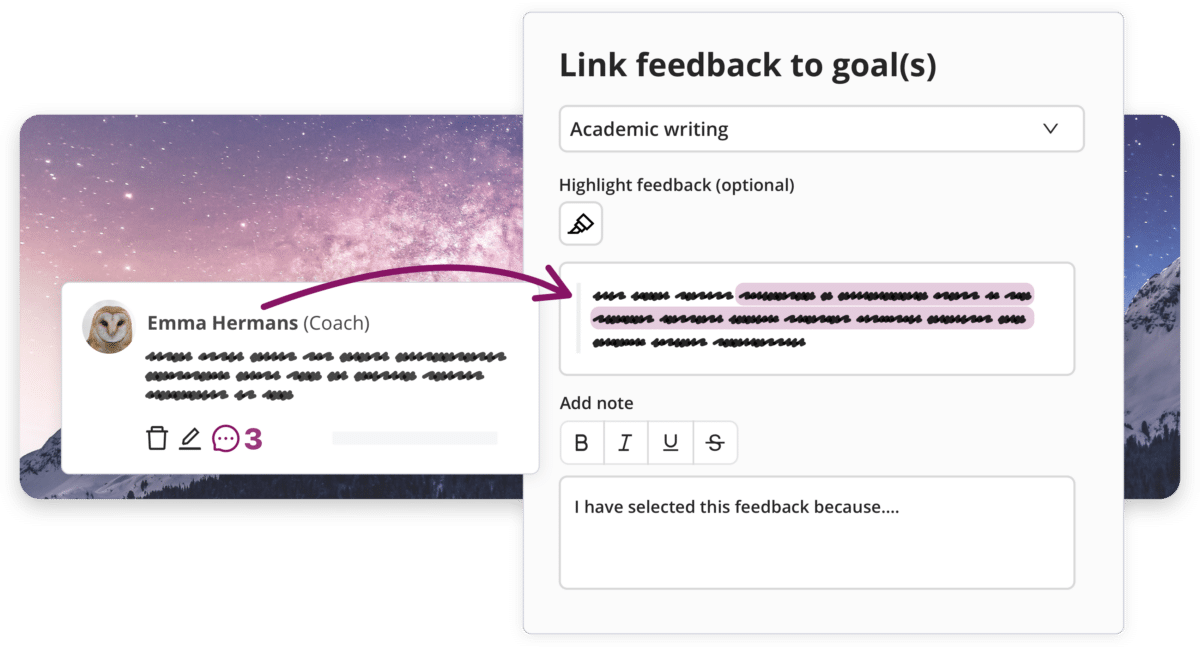
Track
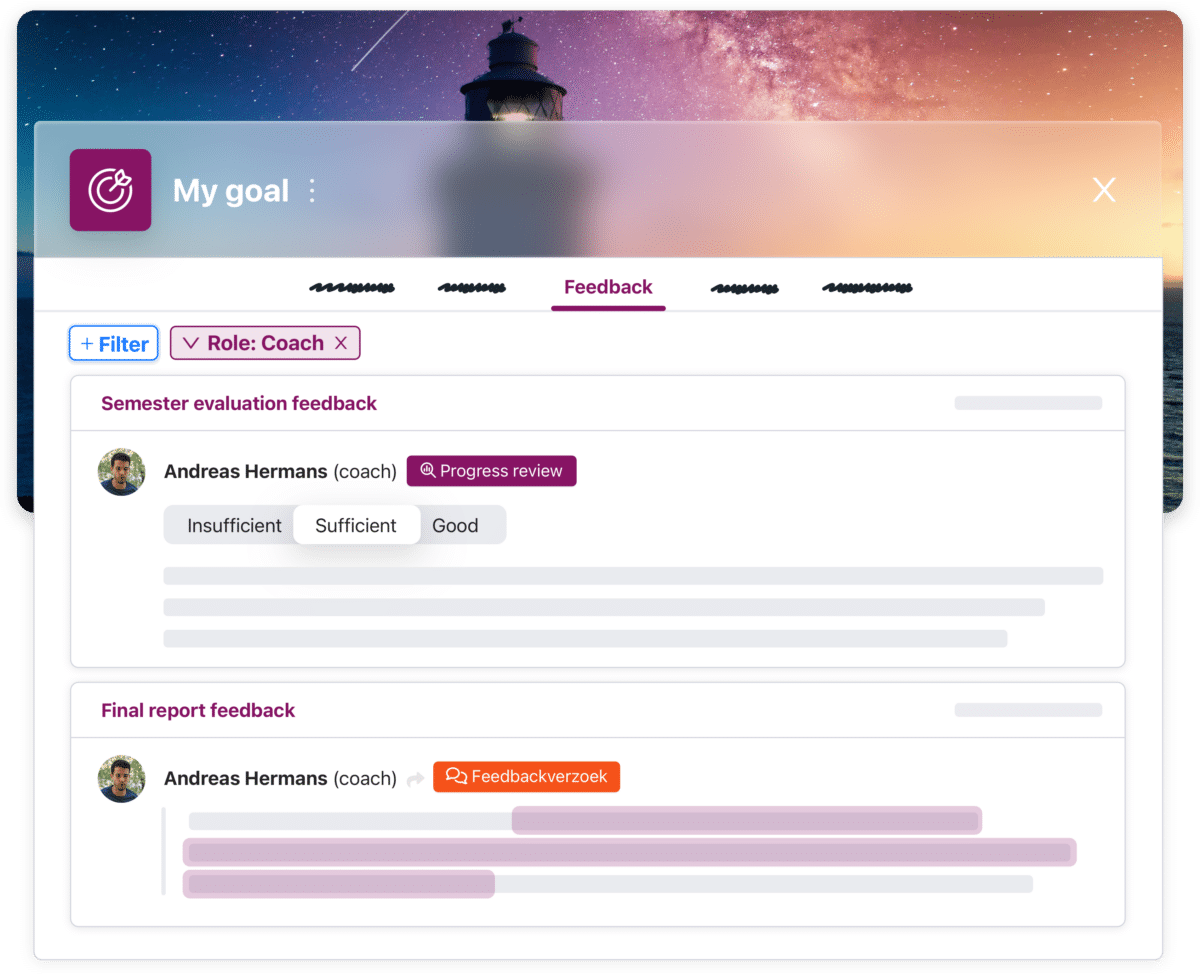
Track 1/5
In the Goal card, an aggregated feedback overview provides students, teachers, and coaches with a comprehensive view of all qualitative (goal) feedback.
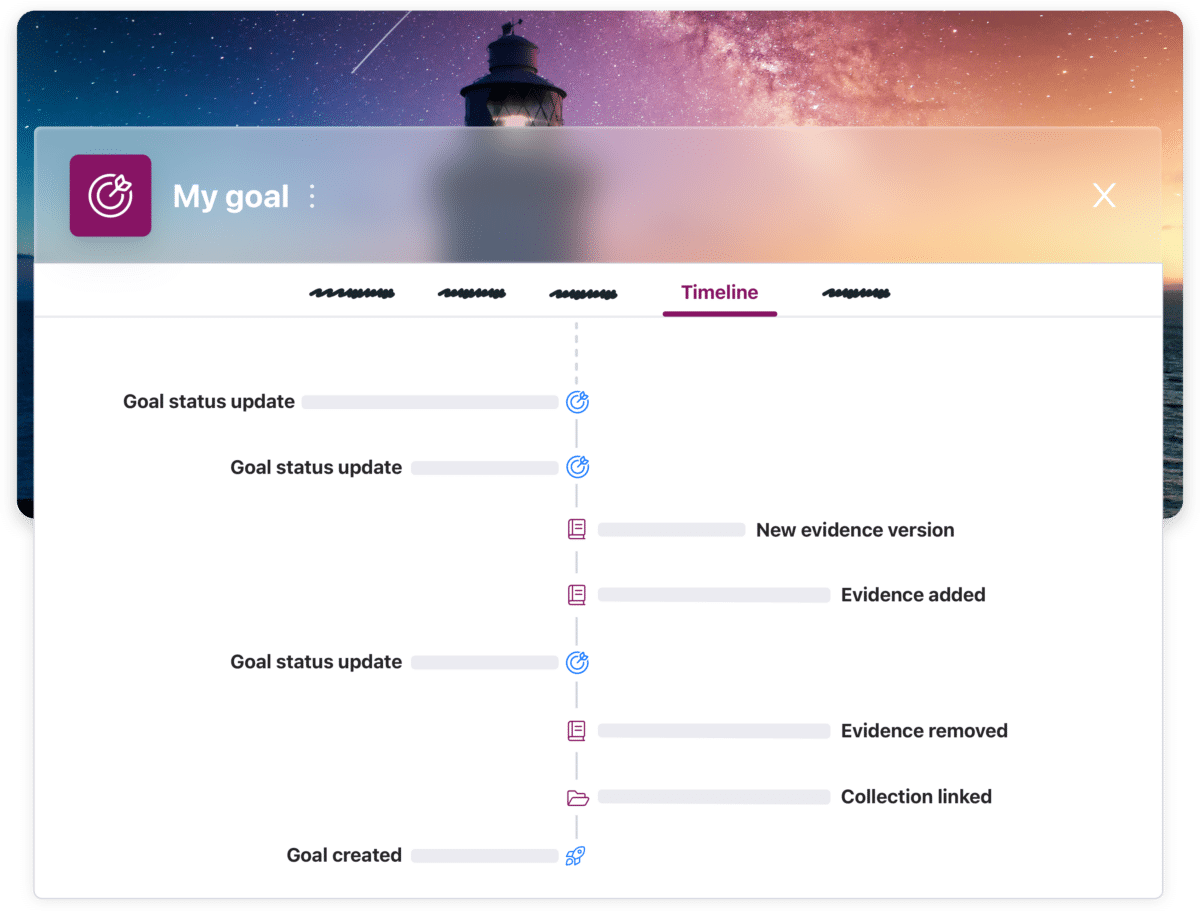
Track 2/5
View all activities related to a goal in the timeline that acts as an audit trail and see what was done when.
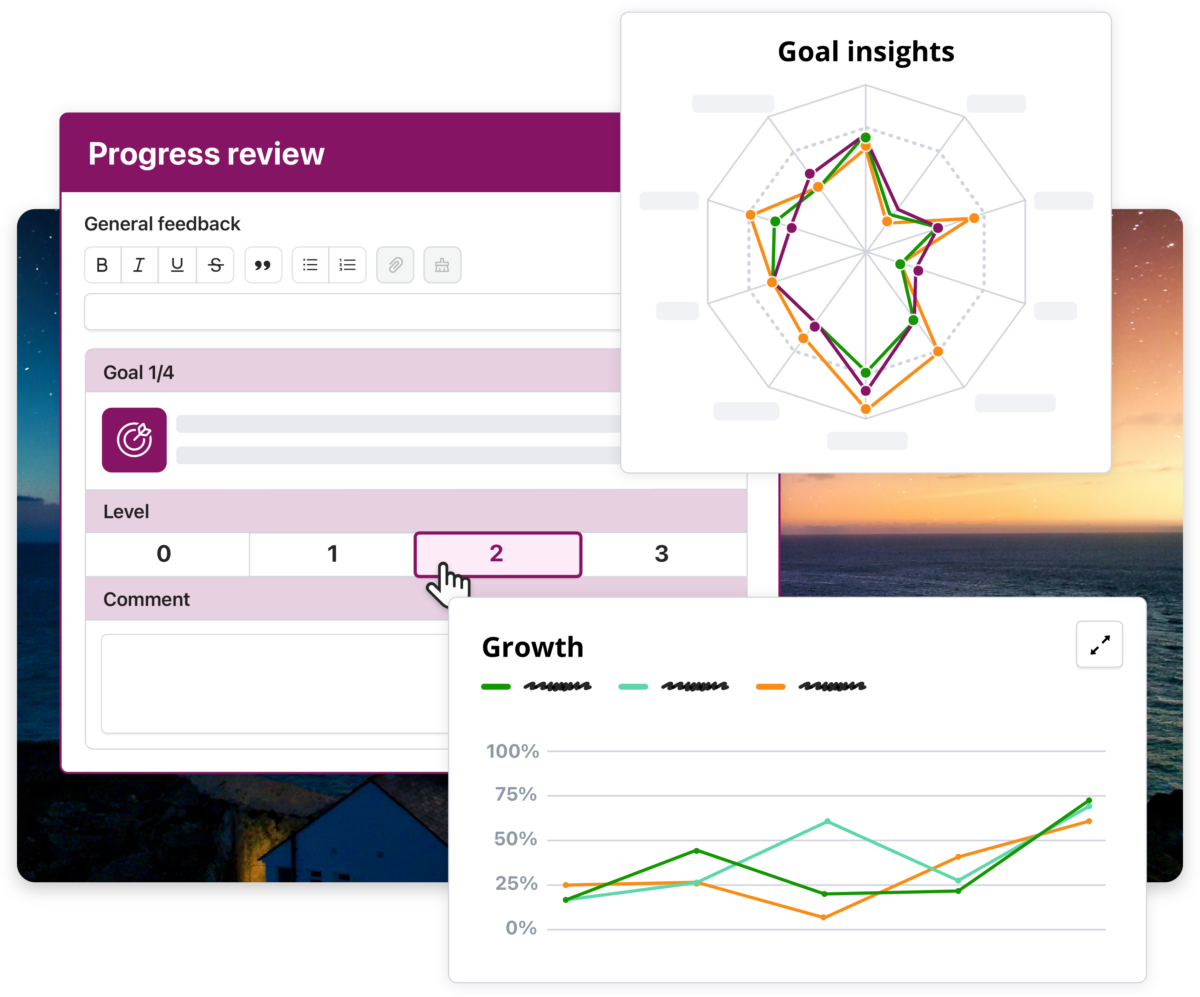
Track 3/5
During the learning process, students and their invitees can track their progress. By sending out progress review requests, both quantitative and qualitative data can be gathered about their progress towards their goals. This data can then be aggregated into growth visualizations and progress charts.
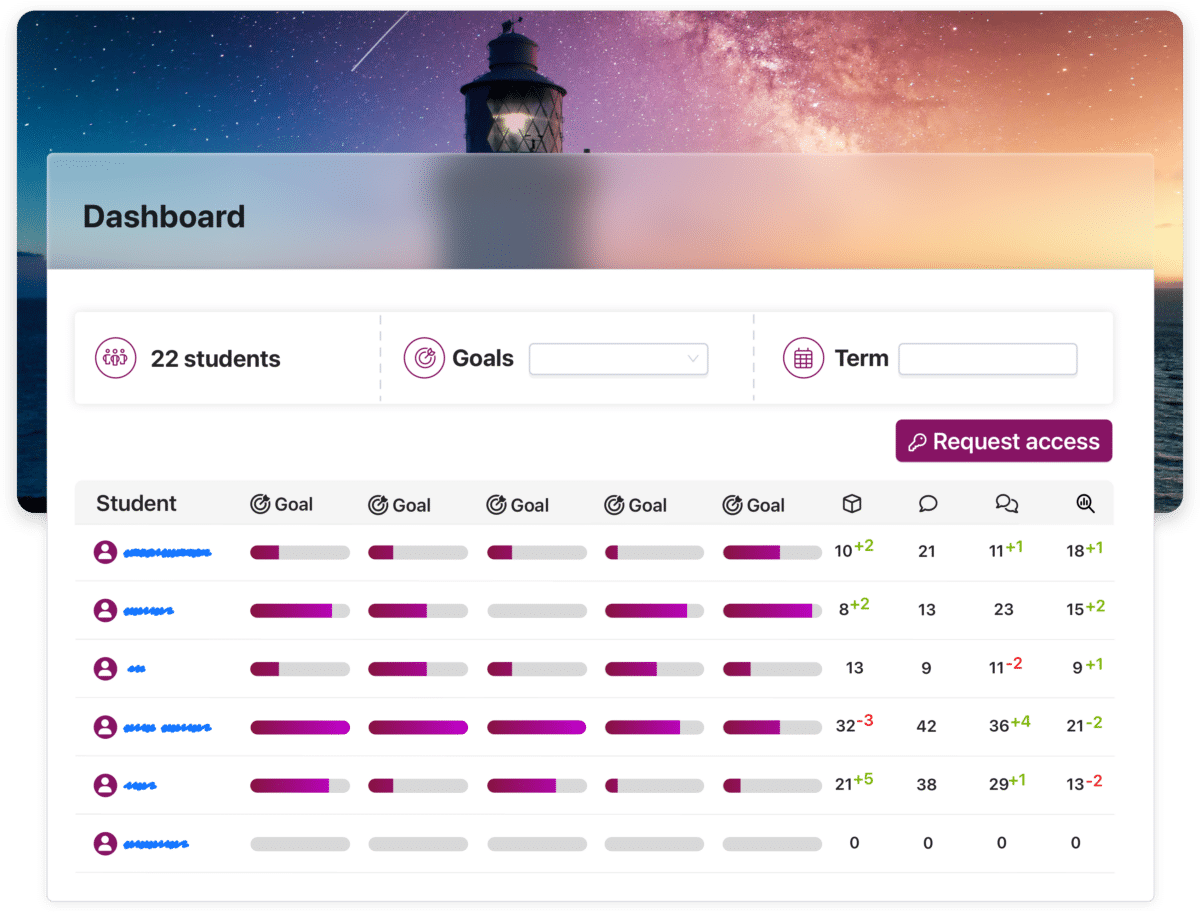
Track 4/5
The coaching dashboard allows coachers, mentors, and teaches to keep track of their students’ live progress and activities.
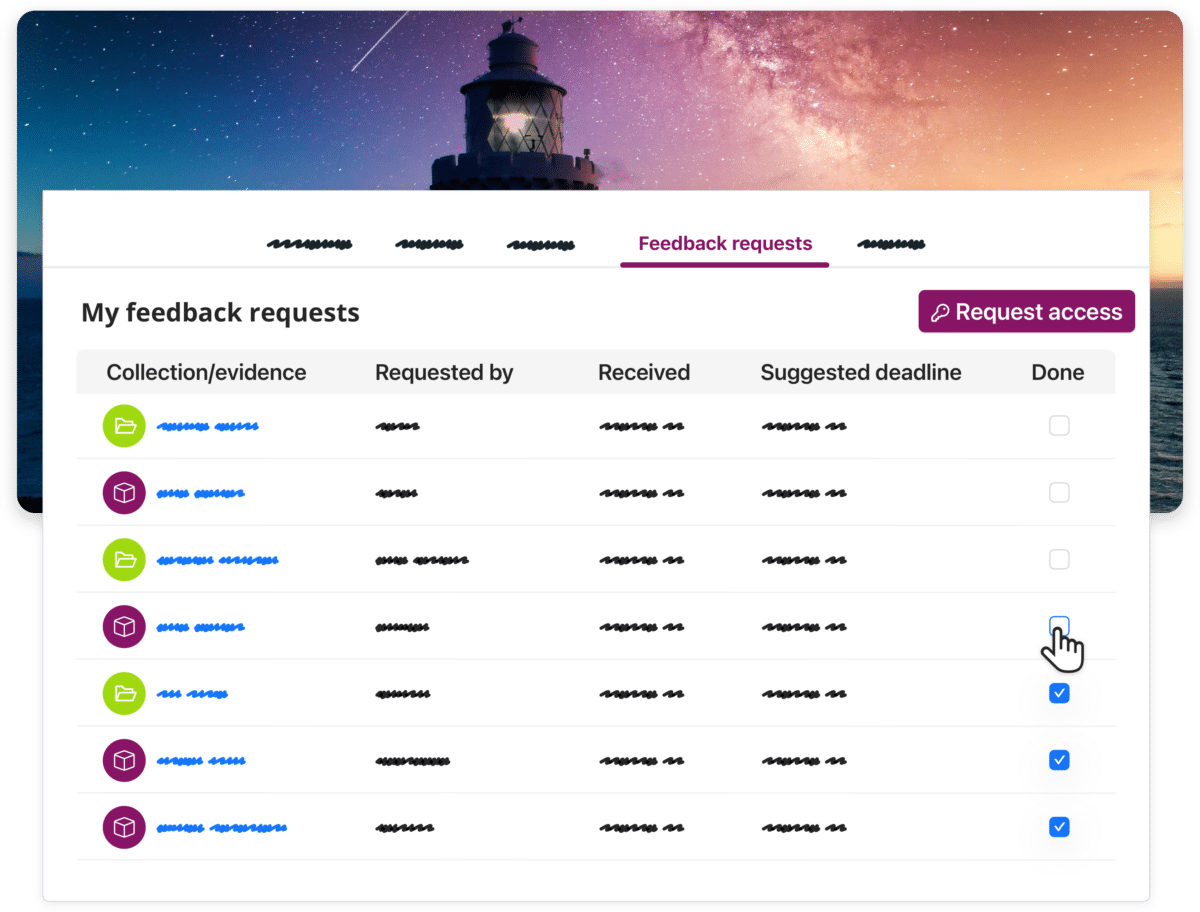
Track 5/5
Keep an easy overview of all your tasks and mark which are done in your feedback requests.
Prove
Prove 1/4
A student can create a snapshot (locked copy) of selected collections and evidence to prepare for submission. A snapshot can no longer be edited and can be used for summative assessment.
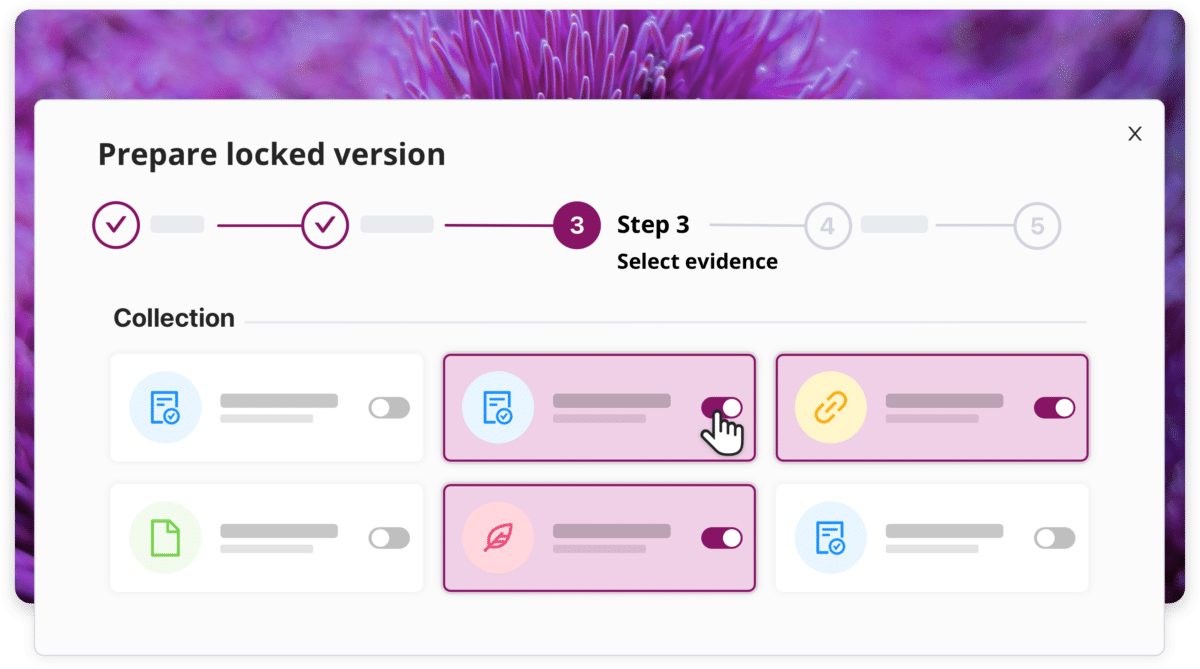
Prove 2/4
A snapshot can be submitted in an LMS assignment and be assessed in its Grader by a teacher.
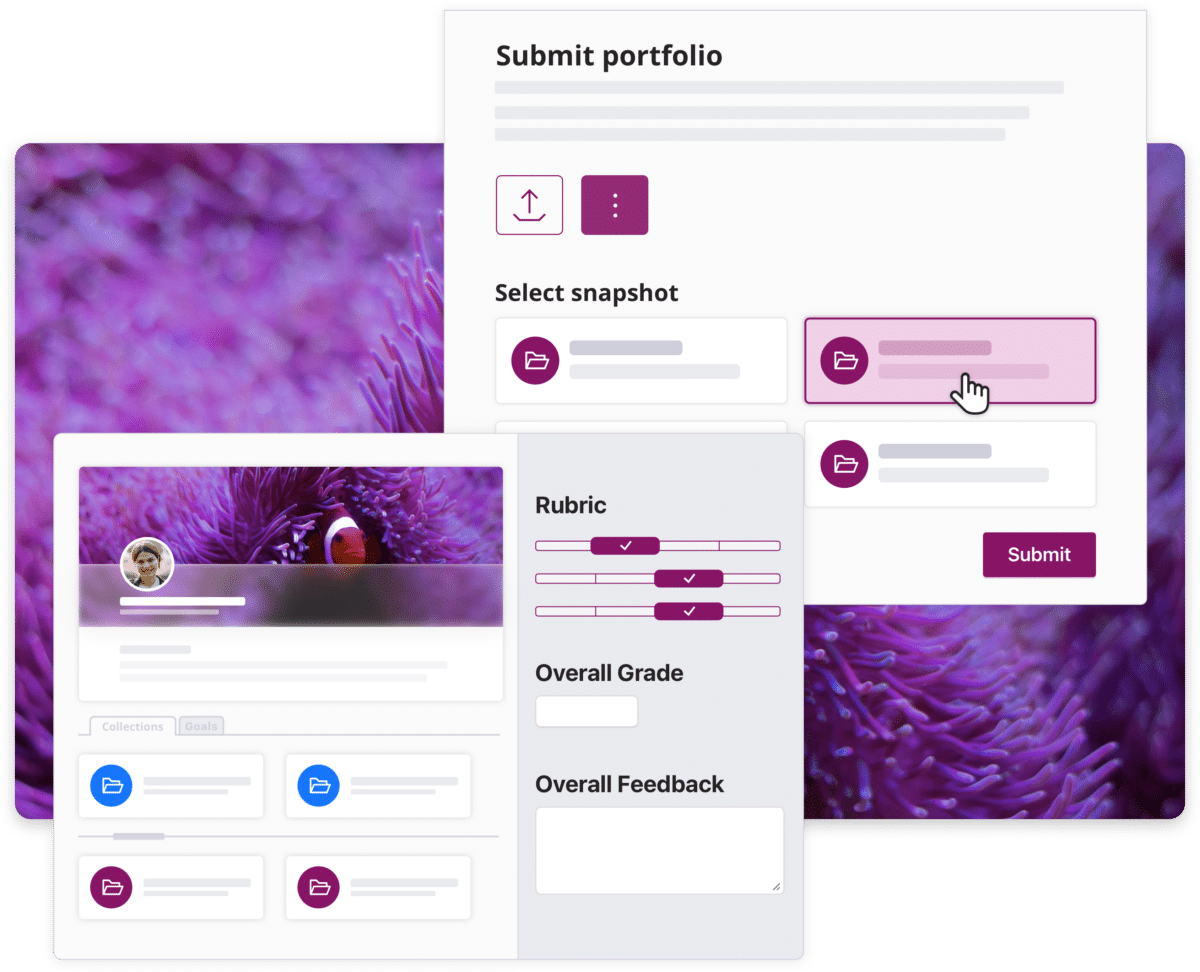
Prove 3/4
A snapshot can also serve as a showcase portfolio that can be shared or embedded in other places. This showcase will not include feedback and only the latest versions of evidence. Snapshots can even be exported into zipped files containing all evidence, feedback and the portfolio structure.
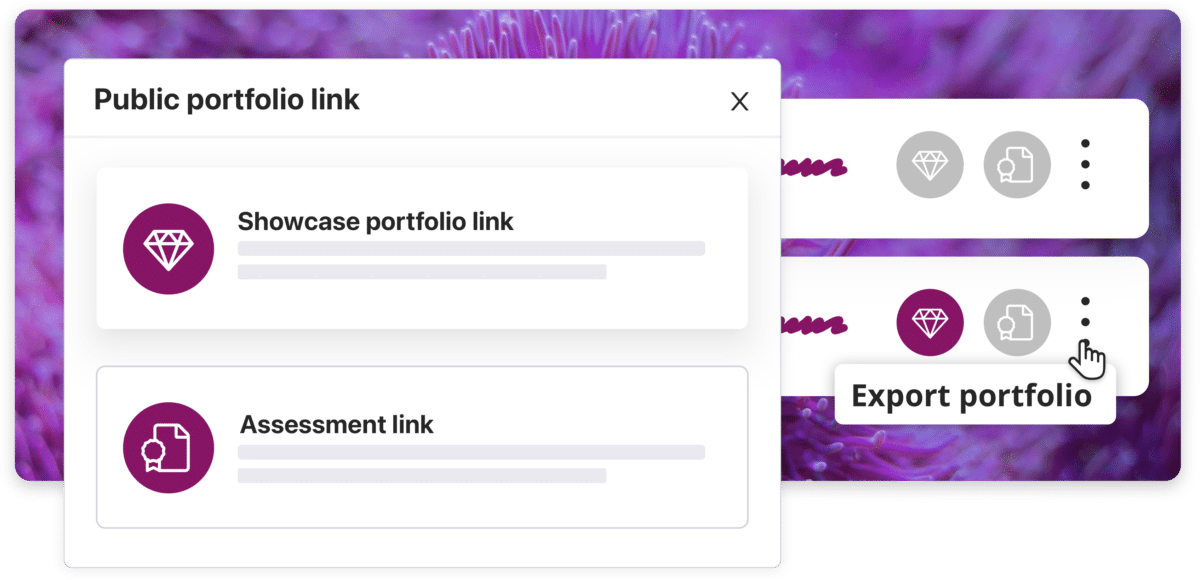
Prove 4/4
Students can optionally add their personal OAuth account to their Portflow account, allowing for alumni access to their portfolio after graduation.

Portflow resources

